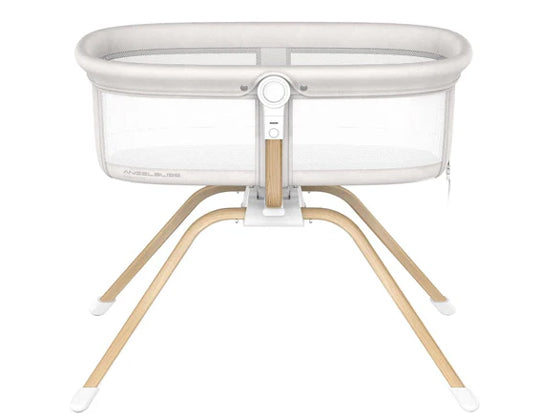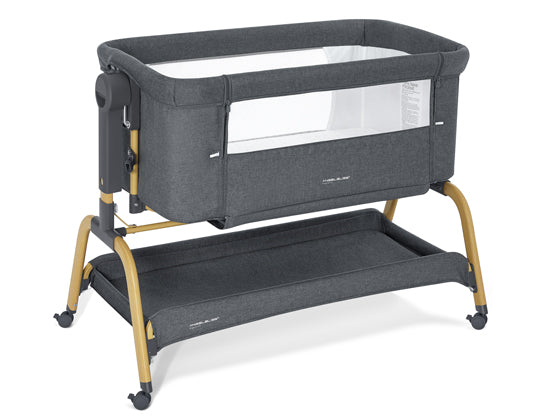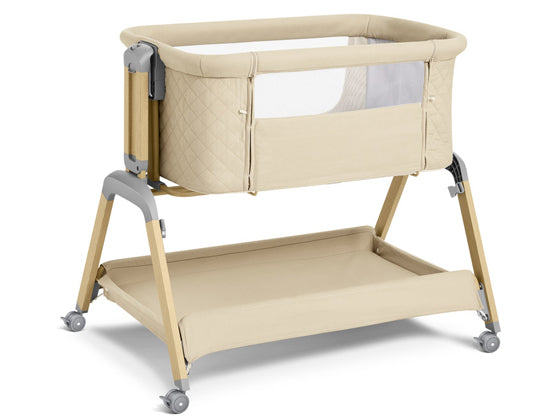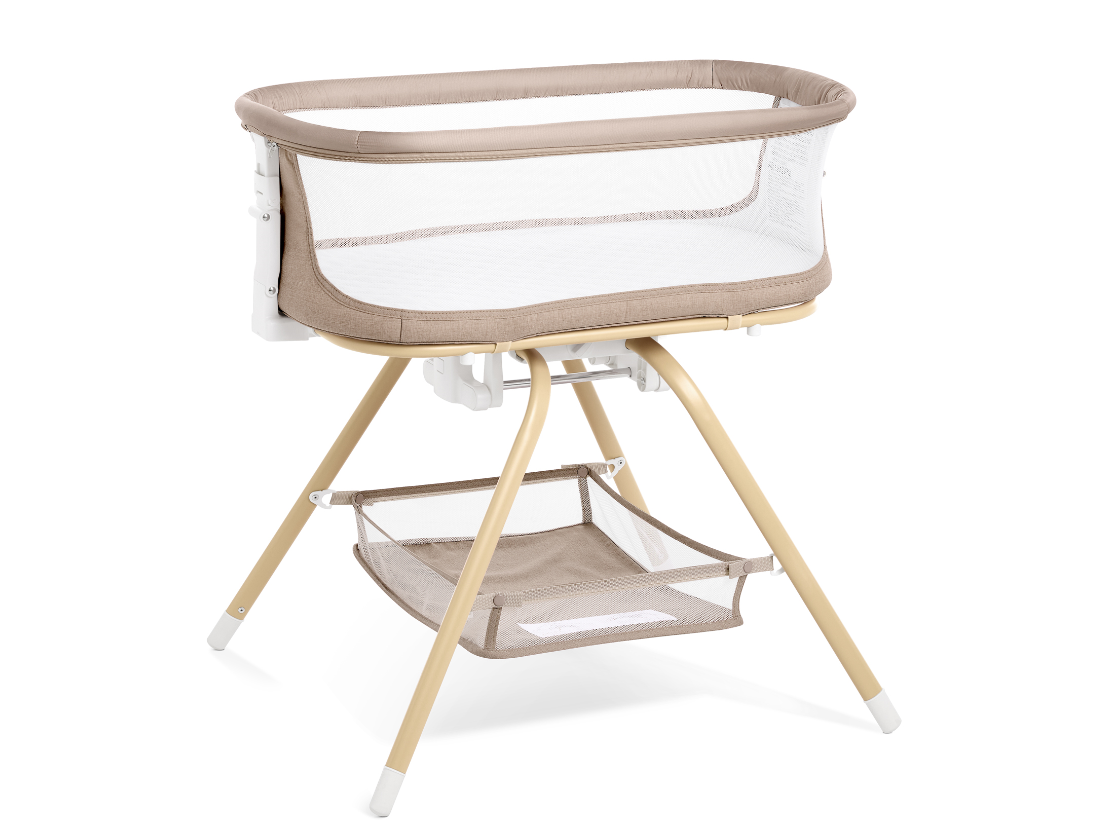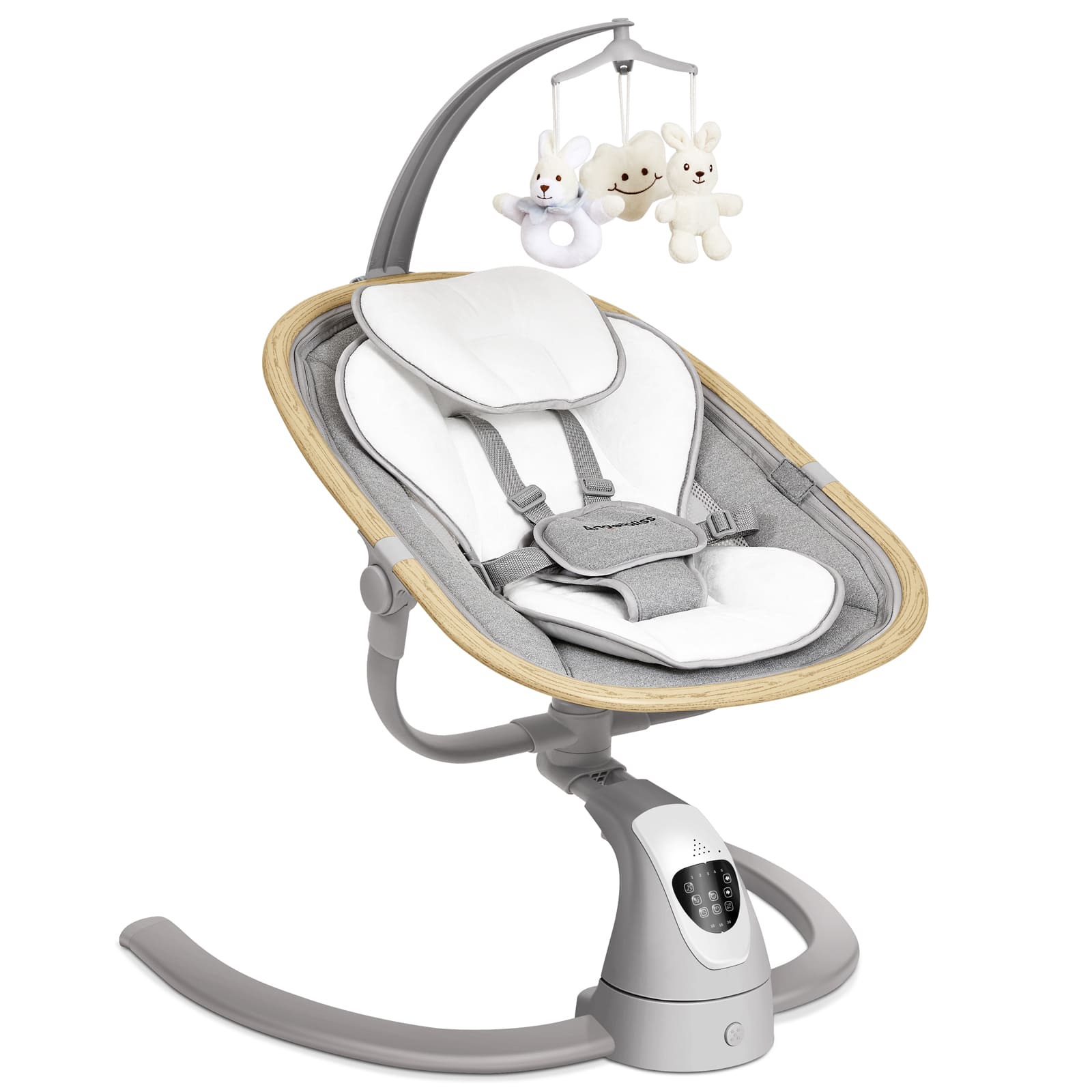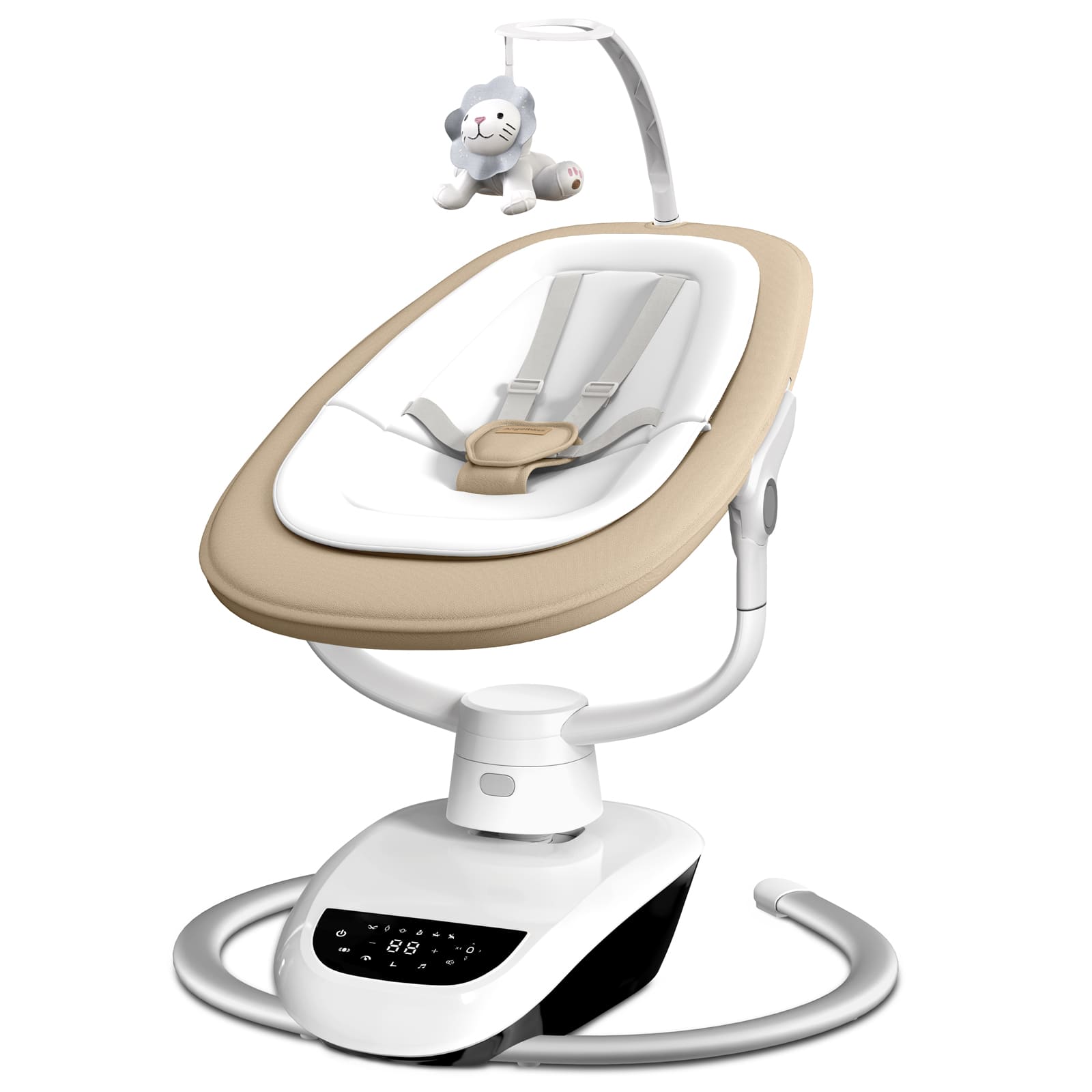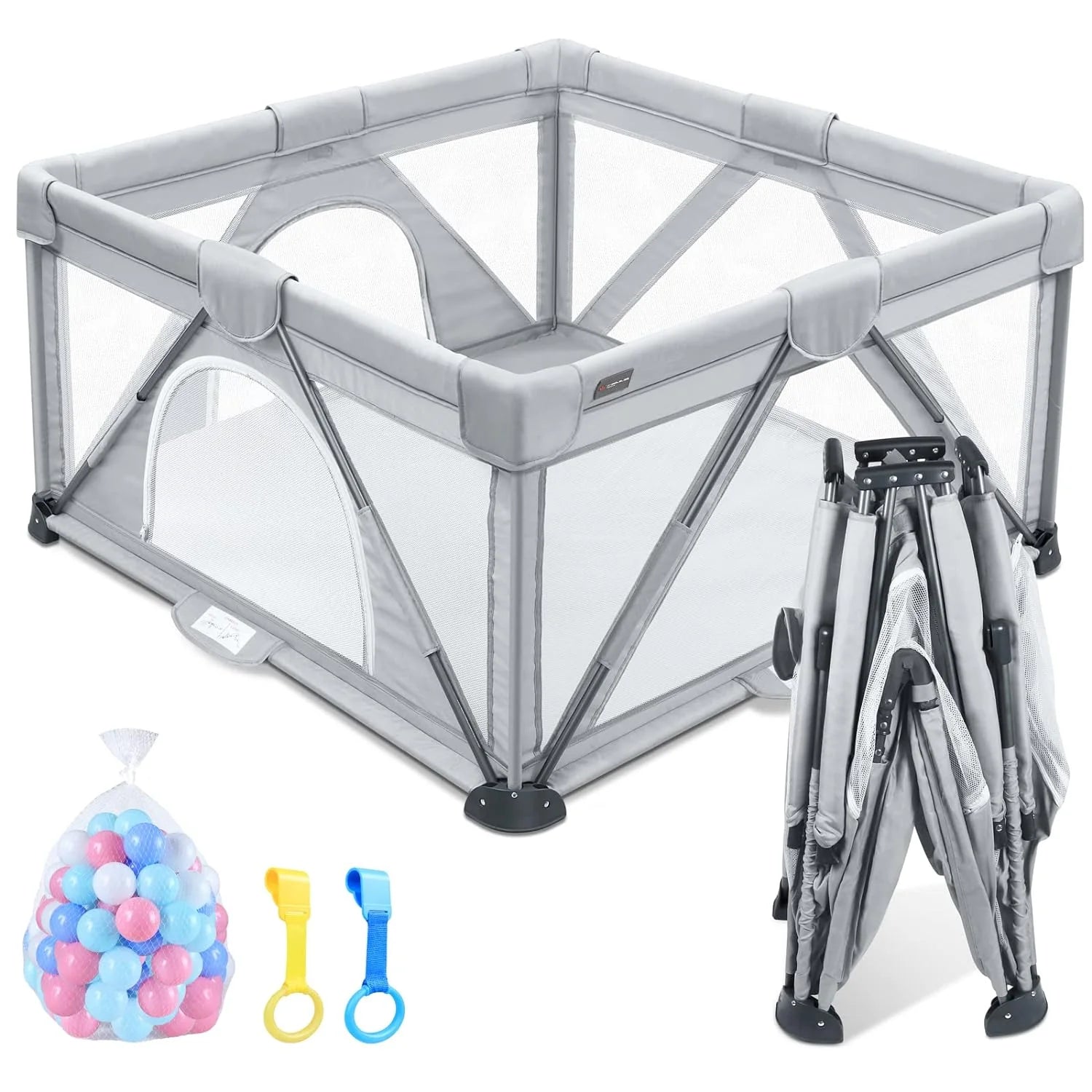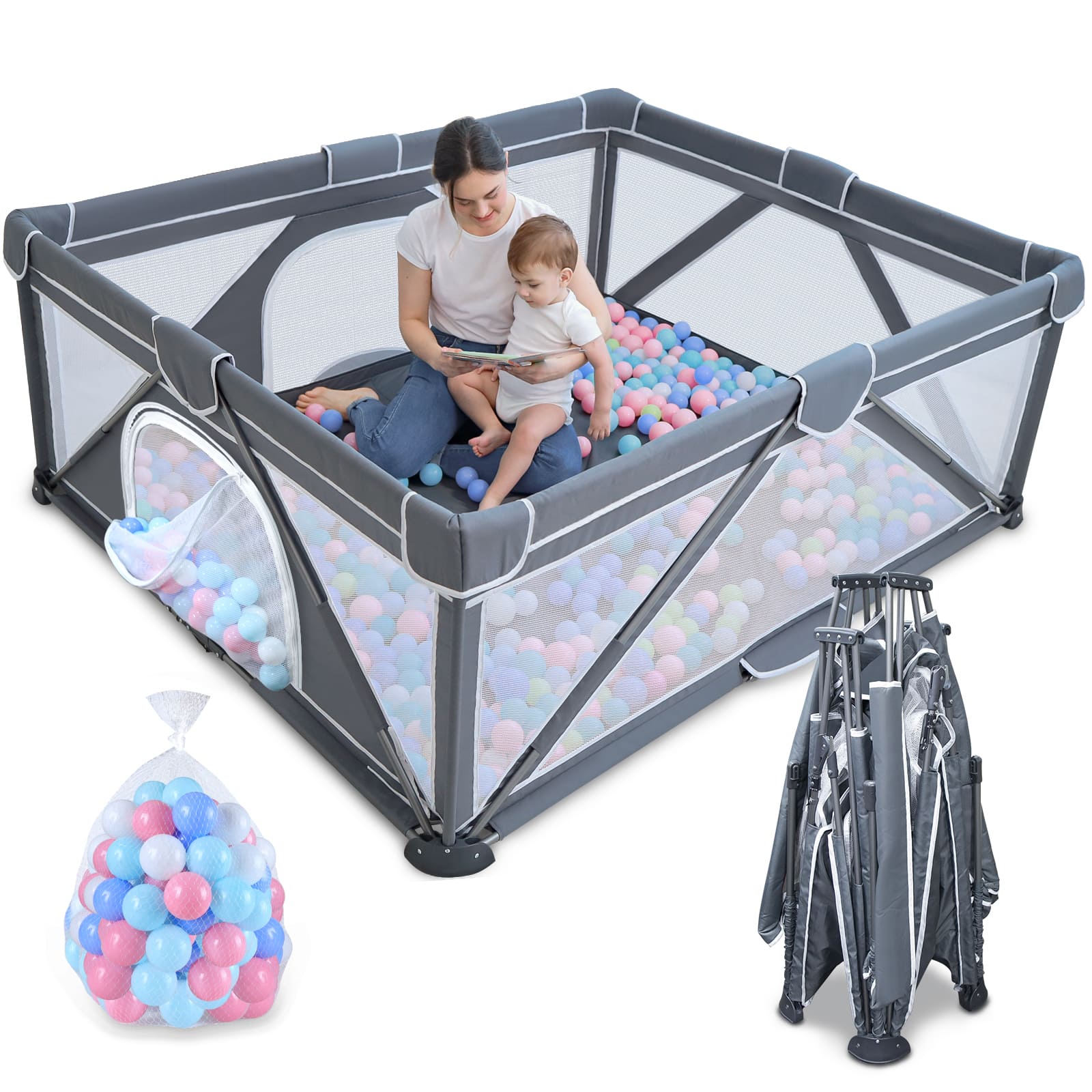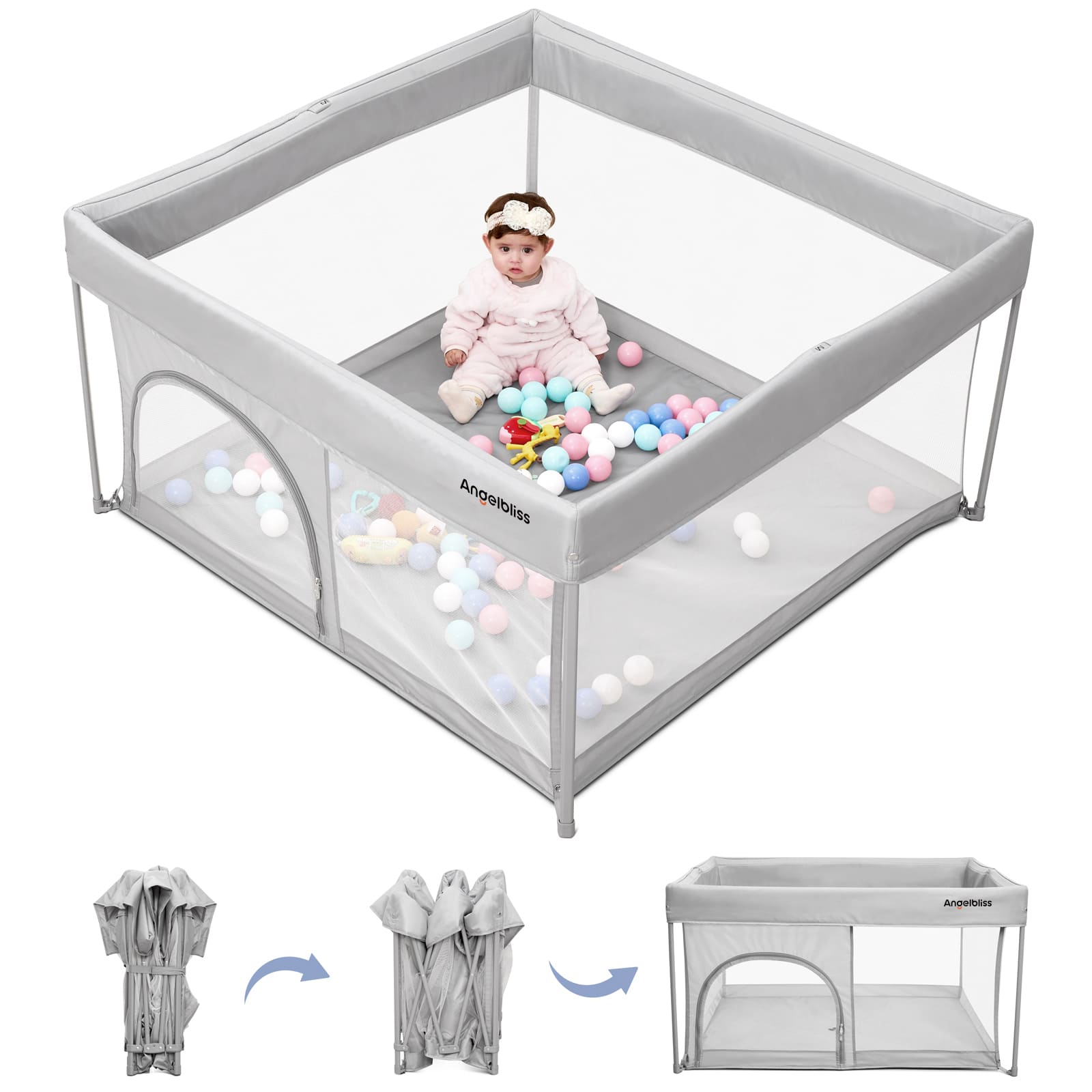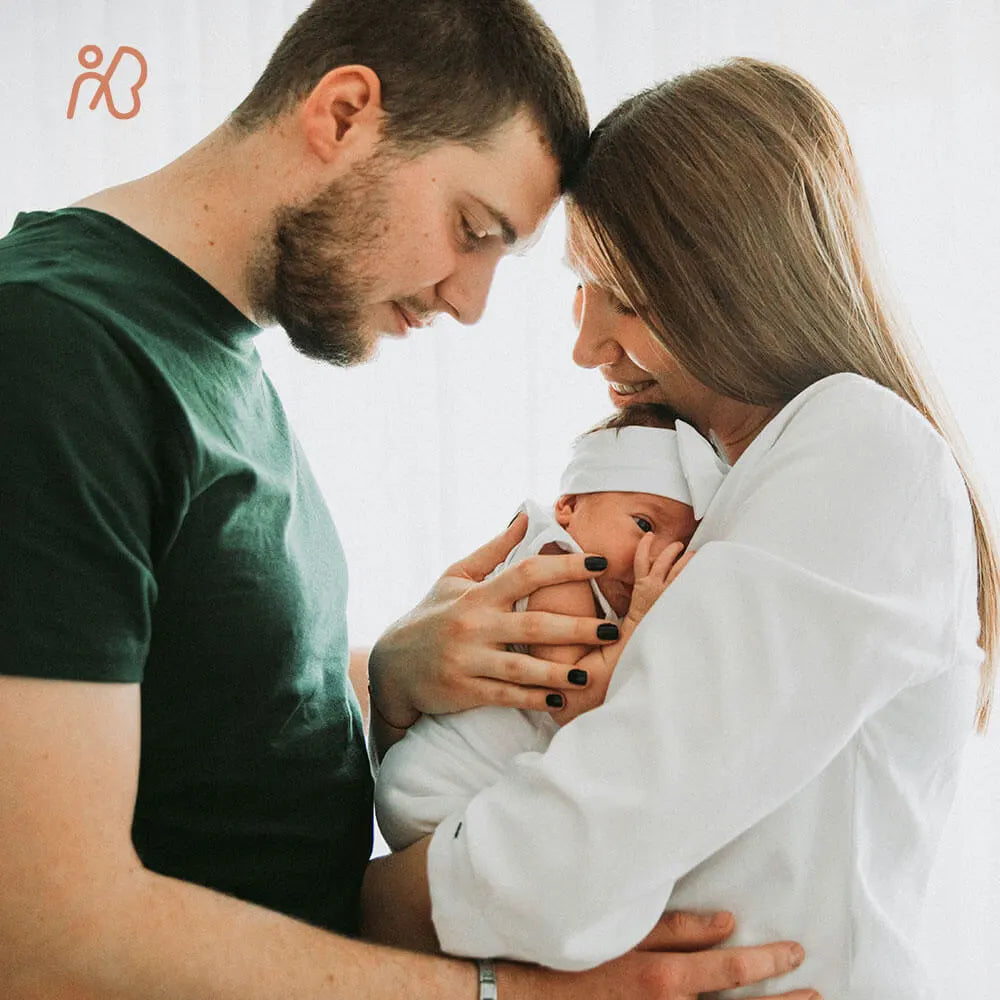The question of can babies sleep in a swing is a common and critical one for many parents seeking ways to soothe their infant. While a baby swing can seem like an indispensable tool, offering gentle motion that often calms a baby when nothing else will, its use for sleep requires careful consideration.

According to leading pediatric health organizations, including the American Academy of Pediatrics (AAP), the answer regarding extended or unsupervised sleep in a swing is no – swings are not recommended for routine sleep. While swings can be beneficial for short, supervised periods of awake time or calming, they are not designed as safe sleeping environments.
This article will explain the risks associated with babies sleeping in swings and outline the AAP's recommendations for safe infant sleep.
Why Swings Are Not Safe for Sleep
While a baby may appear comfortable and content sleeping in a swing, several potential hazards exist:

Risk of Positional Asphyxia (Suffocation):
Newborns in particular have poor control over their heads and necks. When placed in a semi-recumbent position in a swing, their head can fall forward, chin to chest. This posture can obstruct the infant's airway, leading to reduced oxygen intake or, in severe cases, suffocation. This risk is often silent, making it particularly dangerous.
A Higher Chance of Sudden Infant Death Syndrome (SIDS):
To lower the risk of SIDS, the American Academy of Pediatrics recommends that babies sleep on a level, hard surface. Inclined sleepers, including swings, car seats, and bouncers, do not meet this criterion and are associated with an increased risk of SIDS and other sleep-related infant deaths.
Potential for Injury:
As infants grow and become more active, there's a risk they could maneuver out of the swing's harness or, in the case of less stable models, potentially tip the swing, leading to falls or entrapment.
Development of Unsafe Sleep Associations:
Consistently allowing an infant to sleep in a swing can lead to a dependency on motion for sleep. This can make it more challenging for the baby to learn to self-soothe and fall asleep independently in a safe sleep environment like a crib or bassinet.

AAP Sleep Safety Guidelines for Infants
The American Academy of Pediatrics suggests the following ABCs of Safe Sleep to reduce the incidence of SIDS and other sleep-related incidents:
A - Alone: The infant should sleep alone in their designated sleep area. Soft bedding, such as blankets, pillows, bumper pads, and plush toys, should not be present in the sleeping area.
B - Back: Until they are a year old, infants should always sleep on their backs, even during naps and at night. (A baby does not require repositioning if they roll to their stomach on their own.)
C - Crib (or Bassinet/Play Yard): The infant should sleep in a safety-approved crib, bassinet, or play yard that has a firm, flat mattress covered only by a tightly fitted sheet.

Appropriate Use of a Baby Swing
This information does not mean baby swings should be avoided entirely. When used correctly, swings like those in the Angelbliss baby swing collection can be beneficial for your baby's awake and supervised moments.
For soothing a fussy infant while they are awake and under direct supervision. Some models offer multiple functionalities to keep your baby comfortably engaged while you're nearby; for instance, the versatile Angelbliss 3-in-1 Baby Swing can also be used as a bouncer or rocker, providing varied options for awake time.
For short periods when a caregiver needs to be hands-free but can maintain constant observation. During these supervised moments, features like customizable music via Bluetooth found on the Angelbliss Electric Baby Swing (BS02) can add to their contentment, and its foldable design is a practical plus for many homes.
For interactive playtime. Advanced options, such as the Angelbliss Baby Swing with 6 Unique 3D Motions and App Control (BS03), provide varied movements that can mimic a parent's gentle sway, making awake time more engaging and soothing, all managed conveniently through an app.
Crucially, if an infant falls asleep in a swing, they should be promptly and gently moved to a firm, flat sleep surface such as a crib, bassinet, or play yard.
Safe Sleep Environments: Recommended Alternatives
For all infant sleep, the following provide safe and appropriate environments:
Cribs: Make sure the crib satisfies the most recent requirements set forth by the Consumer Product Safety Commission (CPSC).
Bassinets (including bedside sleepers): These provide a separate, safe sleep space close to the parents' bed. Products like the Angelbliss bedside bassinet are designed to offer a firm, flat surface that aligns with safe sleep guidelines.
Play Yards (Playpens): Many play yards are approved for infant sleep and are also convenient for travel or as a secondary sleep space.
Always ensure these products are used according to the manufacturer's instructions and meet current safety standards, featuring a firm, flat mattress that fits snugly within the frame.

Alternative Soothing Techniques for Infants
If you are seeking ways to calm your infant without relying on a swing for sleep, consider these methods:
Swaddling (for newborns who have not yet started to roll): This can provide a sense of security.
White Noise Machine: A consistent, low-level sound can be calming.
Pacifier: Offering a pacifier at bedtime and during naps may lower the incidence of SIDS, according to the American Academy of Pediatrics.
Gentle Rocking or Holding: Soothing an infant in your arms is a traditional and effective method.
Establishing a Consistent Bedtime Routine: Activities such as a warm bath, quiet feeding, and reading can help signal to an infant that it is time to sleep.

Putting Infant Safety First
One of a caregiver's most crucial duties is to make sure the sleeping environment is safe. While baby swings serve a purpose for awake time and supervised soothing, they are not a safe alternative to a crib, bassinet, or play yard for infant sleep.
If your infant falls asleep in the swing, the safest course of action is to transfer them to their designated safe sleep space. This diligence contributes significantly to their well-being.

For further guidance on infant sleep safety or if you have concerns about your baby's sleep habits, please consult with your pediatrician. Angelbliss is committed to supporting parents by offering high-quality solutions, including a range of baby swings designed for safe, supervised awake-time use, as well as sleep solutions like our bedside bassinets and playpens that adhere to infant safety and comfort as top priorities.

